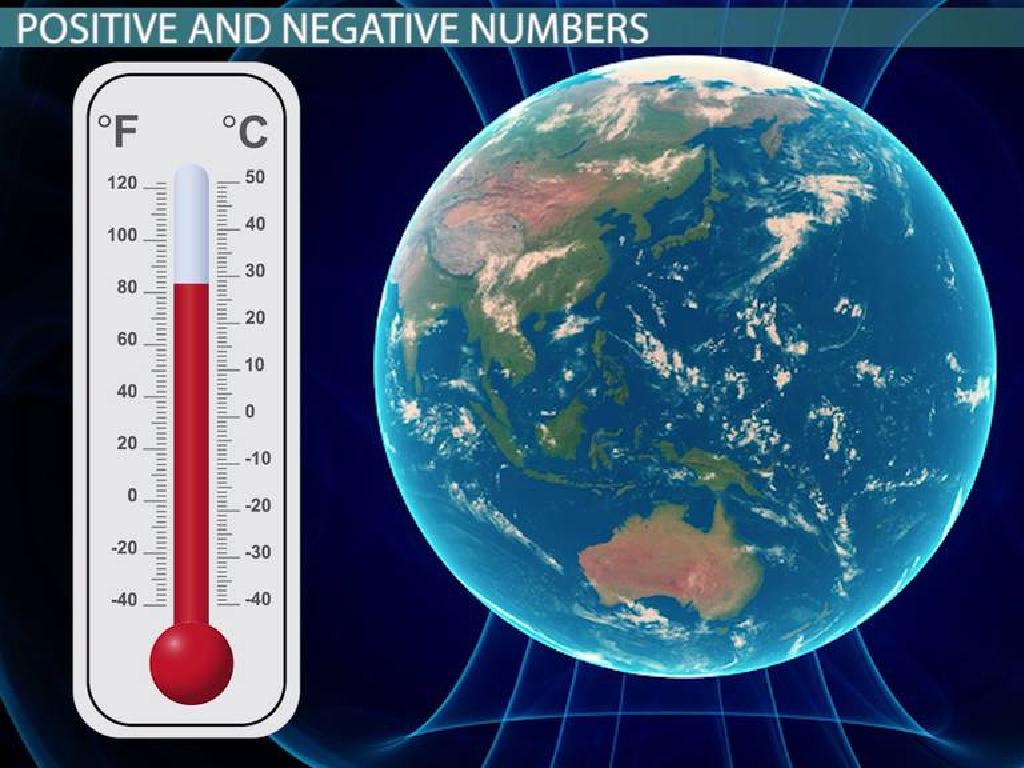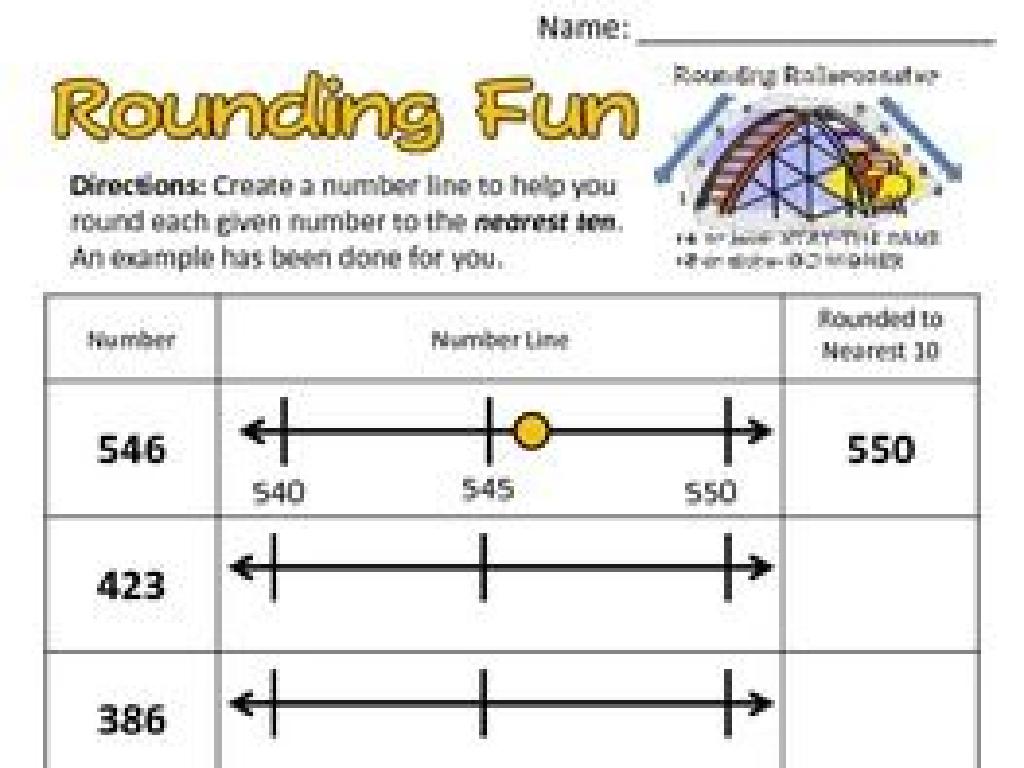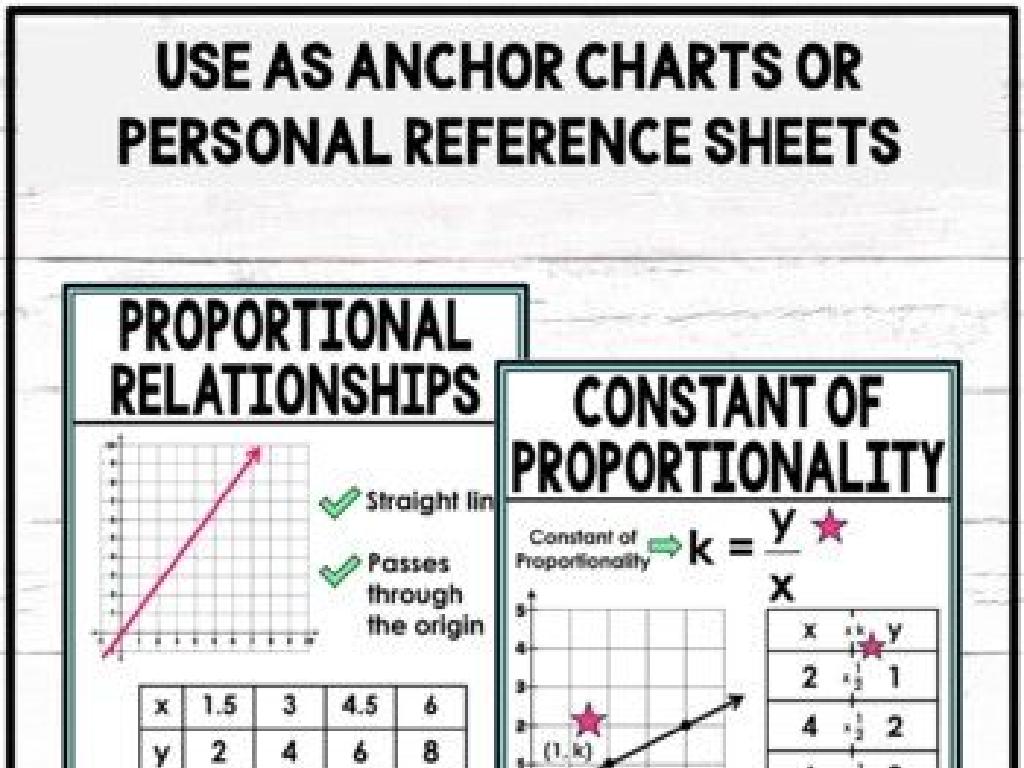Identify Earth'S Land Features Using Photographs
Subject: Social studies
Grade: Fourth grade
Topic: Physical Geography
Please LOG IN to download the presentation. Access is available to registered users only.
View More Content
Exploring Earth’s Land Features
– Learn about Earth’s landscapes
– Discover diverse landforms
– Mountains, valleys, plains, and more
– Analyze landforms in photos
– Use photos to identify characteristics
– Recognize features in your area
– Find examples of landforms near you
|
This slide introduces the concept of physical geography and focuses on the various land features found on Earth. Students will learn about the diversity of the planet’s landscapes, including mountains, valleys, plains, and other landforms. By analyzing photographs, they will practice identifying these features and understanding their characteristics. Encourage students to think about the landforms they may have seen or visited, and to recognize similar features in their local area. This will help them connect the lesson to the real world and enhance their geographical awareness.
Exploring Earth’s Land Features
– What is Physical Geography?
– It’s the study of Earth’s natural landscapes.
– Purpose of studying Physical Geography
– Helps us learn about our planet’s environment.
– Examples of Earth’s land features
– Mountains rise high, valleys dip low, plains are flat expanses.
– Recognizing features in photographs
– Use photos to identify and learn about different landforms.
|
This slide introduces the concept of Physical Geography, which is the branch of geography dealing with natural features and processes of the Earth. It’s important for students to understand that this field helps us comprehend the environment we live in, including various landforms like mountains, valleys, and plains. Encourage students to think about how these features might appear in photographs and how they can use visual clues to identify them. This will set the foundation for future lessons where they will use photographs to recognize and describe these physical features of the Earth.
Exploring Mountains: Earth’s Majestic Landforms
– Mountains are Earth’s giants
– Tall natural elevations, much higher than hills
– Formed by Earth’s inner forces
– Created by tectonic activity or volcanic eruptions
– The Rocky Mountains: A case study
– A famous mountain range in North America
|
This slide introduces students to the concept of mountains as significant natural elevations on Earth’s surface. Explain that mountains are much taller than hills and often have steep sides and sharp or rounded peaks. Discuss how tectonic plate movements push the Earth’s crust to form mountains and how some mountains are born from volcanic activity. Use the Rocky Mountains as a specific example to help students visualize and understand the concept of mountain ranges. Encourage students to think about other mountain ranges they know and how these might have been formed. Show photographs of the Rocky Mountains and other mountain ranges to provide visual context.
Exploring Valleys
– Valleys: Low land between hills
– Valleys are like big ditches in the earth, surrounded by higher land.
– Rivers or streams may flow in valleys
– Think of valleys as pathways for rivers, like the streets for cars.
– Example: The Grand Canyon
– The Grand Canyon is a famous valley with the Colorado River running through it.
|
This slide introduces students to the concept of valleys as significant land features in physical geography. Valleys are described as lower areas of land, usually situated between hills or mountains, which often serve as the course for rivers or streams. The Grand Canyon, carved by the Colorado River, is provided as a tangible example of a valley. It’s important to use photographs to help students visualize valleys and understand their formation. Encourage students to discuss other valleys they may know or have visited. The aim is to help students identify valleys in different landscapes and comprehend their role in the Earth’s geography.
Exploring Earth’s Plains
– Plains are large, flat lands
– Plains have few trees
– Ideal for farming and building
– Open spaces make it easier to use machines and build structures
– Example: The Great Plains
– The Great Plains stretch across central USA, known for agriculture
|
This slide introduces students to the concept of plains as a type of land feature on Earth. Plains are characterized by their vast, flat surfaces, which make them distinct from other landforms like mountains or hills. The lack of trees typically found in plains is due to the consistent flatness of the terrain. These areas are particularly suited for agricultural activities because the flat land allows for the easy use of farming machinery and the construction of buildings without the need to navigate around natural obstacles. An example to highlight is The Great Plains in the United States, which is a region well-known for its extensive farming due to the favorable flat terrain. Encourage students to think about other plains they may know and discuss why these areas are good for farming and building.
Exploring Deserts: Earth’s Dry Landscapes
– Deserts are very dry areas
– They receive very little rainfall annually
– Deserts can be hot or cold
– The Sahara is scorching, while Antarctica is freezing
– Plants and animals adapt to deserts
– Cacti store water; camels have humps for fat storage
– Examples: Sahara and Antarctica
|
This slide introduces students to the concept of deserts as part of Earth’s diverse land features. Deserts are defined by their lack of precipitation, not necessarily by their temperature, which can be a common misconception. Highlight the extreme conditions in both hot deserts like the Sahara and cold deserts like Antarctica. Discuss how plants and animals have special adaptations to survive in such harsh environments, like cacti storing water and camels having humps for fat storage, which provides energy and helps regulate body temperature. Use photographs to visually demonstrate these features and adaptations. Encourage students to think about how these adaptations help survival and to consider the vast differences in climate between hot and cold deserts.
Exploring Islands
– Islands: Land surrounded by water
– An island is completely encircled by water
– Formed by volcanoes or corals
– Volcanic islands rise from the ocean floor; coral islands are made of coral debris
– Example: Hawaiian Islands
– The Hawaiian Islands were formed by volcanic activity
|
This slide introduces students to the concept of islands as a part of Earth’s physical geography. Explain that islands are bodies of land entirely surrounded by water, which can vary greatly in size and formation. Some islands are formed by volcanic activity, where magma from the Earth’s core pushes up through the ocean floor and solidifies. Others are formed by the growth of coral reefs which accumulate over time. Use the Hawaiian Islands as a concrete example of volcanic islands, and discuss how each island in the chain was formed by its own individual volcano. Encourage students to think about other islands they know and how they might have been formed.
Exploring Earth’s Land Features
– Identify land features in photos
– Look at pictures and name mountains, valleys, etc.
– Discuss unique characteristics
– What’s special about a mountain or a river?
– Consider features’ environmental impact
– How do landforms shape climate and ecosystems?
– Reflect on how features affect people
– Think about living near mountains vs. plains
|
This slide aims to engage students in identifying and understanding different land features through photographs. Encourage them to observe closely and name various landforms such as mountains, valleys, rivers, and plains. Discuss the unique aspects of each feature, like a mountain’s elevation or a river’s flow. Explore how these landforms can influence the environment, including climate patterns and animal habitats. Lastly, consider the human aspect, such as how living in different geographical areas can affect lifestyle, culture, and activities. This will help students appreciate the diversity of physical geography and its relevance to both the natural world and human society.
Class Activity: Land Feature Detectives
– Break into small groups
– Analyze a set of photographs
– Look closely at each photo’s details
– Identify and label land features
– Mountains, valleys, rivers, plains
– Present findings to the class
|
In this engaging class activity, students will work in small groups to become ‘Land Feature Detectives.’ Each group will receive a set of photographs depicting various physical geographical features. Their task is to carefully examine the photographs, discuss within their group, and use their detective skills to identify and label different land features such as mountains, valleys, rivers, and plains. Once they have completed their analysis, each group will present their findings to the class, explaining how they identified each feature. This activity will help students to visually connect textbook knowledge with real-world examples, enhancing their understanding of Earth’s physical geography. For the teacher: Prepare diverse photographs in advance, ensure each group has a clear view of their set, and provide labels or markers for the identification process. Encourage students to justify their reasoning during their presentations.
Our Planet’s Land Features
– Recap of land features
– Mountains, valleys, plains, and deserts
– Why geography matters
– Geography shapes cultures and ecosystems
– Preserving our land
– Protect land by reducing pollution
– Being Earth’s guardians
– Small actions at home can make a big difference
|
This slide aims to summarize the key points from today’s lesson on Earth’s land features. Start by reviewing the different types of land features such as mountains, valleys, plains, and deserts, and use photographs to help students recall each one. Emphasize the significance of physical geography in our daily lives, how it influences the environment, and its impact on human cultures. Discuss ways we can contribute to the preservation of these natural wonders, like reducing pollution and practicing sustainability. Encourage students to think of themselves as guardians of the Earth and to consider actions they can take at home or in their community to protect our planet’s diverse landscapes.






